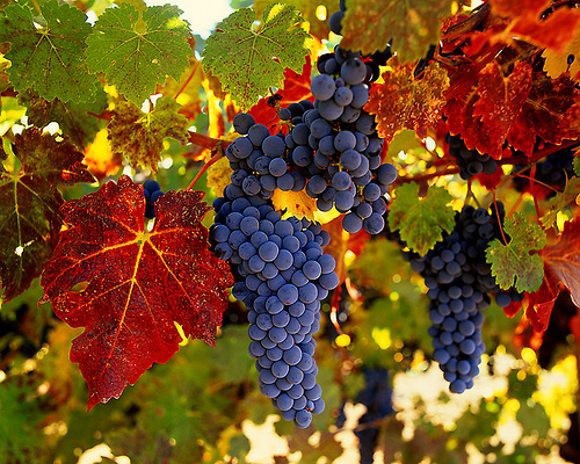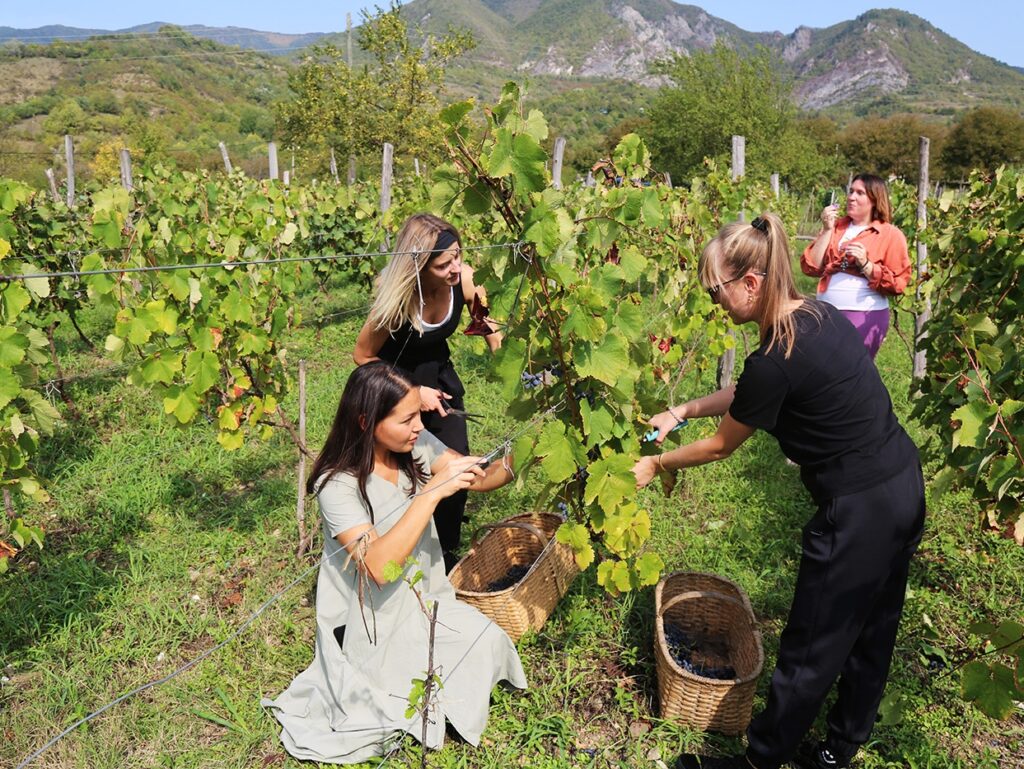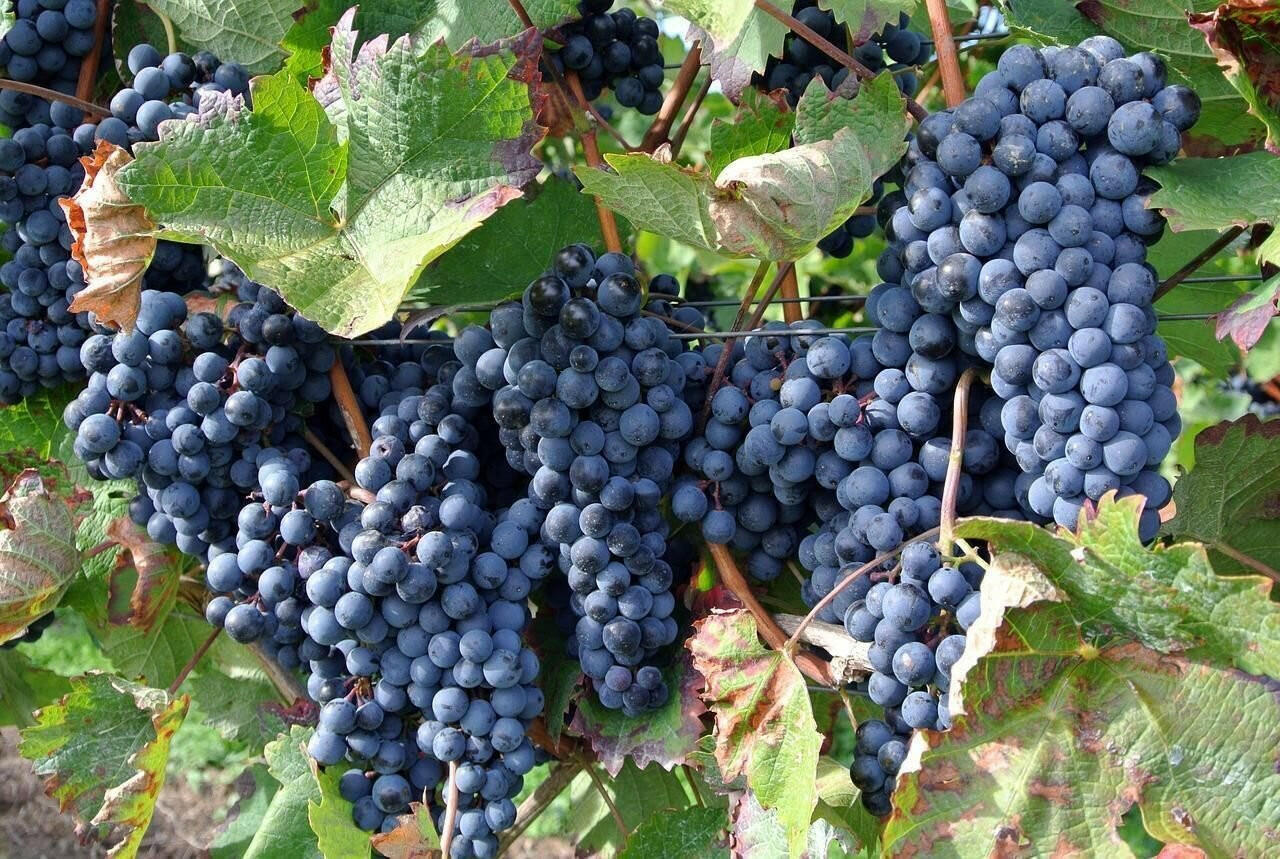Food & Climate
Georgian grapes represent nutritional, heritage, and cultural value, and a source of income for the population through their transformation into wine. With climate change, their diversity and variety are becoming a means for farmers to preserve them.
For generations, farmer Givi Chepenidze’s family has nurtured indigenous blue and purple Georgian grape varieties, such as tsitska, krakhuna and adanasuri, which have been part of the local landscape and cultural heritage for centuries. Chepenidze, who lives in Georgia’s Imereti region, said, “My ancestors were winemakers. One of them was the keeper of the royal wine cellar for the last king of Imereti in the 19th century.”
In fact, he named his wine brand “Nanua” after the Imereti region of Georgia, according to a report seen by “Food & Climate” platform.
However, today, Chepenidze not only uses his crops for wine production, but also cultivates and collects approximately 120 different endemic grape varieties on 3 hectares of land.
With climate change, preserving grape diversity is a resilience strategy. One variety may be more adaptable to changes than others previously used.
With climate change, preserving grape diversity is a resilience strategy. One variety may be more adaptable to changes than others previously used.
Georgian grapes: the country’s treasure
Givi Chepenidze believes that Georgian grape varieties are “the country’s treasure, its heritage, and its history, both scientifically and culturally.”

In 2024, to expand the reach of his products, he received a grant under the Food and Agriculture Organization of the United Nations (FAO) Matchmaking Programme through the European Neighborhood Programme for Agricultural and Rural Development (Neighborhood Programme). This program, funded by the European Union and the Swedish government, supports rural development by leveraging the country’s agricultural potential and creating economic opportunities for rural residents. The program also works to improve food safety in the country, with additional support from the Swedish government and the Czech Development Agency.
Thanks to the Harmonization Program grant, Chepenidze was able to expand his small-scale wine production by integrating modern food safety standards with traditional production methodologies. “With the financial assistance, I acquired wine storage equipment, a vacuum filling machine, and a still,” he said.
With the new still, Chepenidze is able to expand his production of chacha—a traditional Georgian distilled alcoholic beverage. “My cast iron still was outdated and did not meet modern food standards. I now have a copper still, which is of much higher quality and avoids any contaminants that end up in the chacha,” he said.
Agri-tourists
Hosting agri-tourists from around the world is one of the main sources of income for the agri-tourists family’s business, and food safety is of paramount importance when it comes to providing unique experiences of Georgian hospitality and wine tourism in Imereti. He purchased a refrigerator and air conditioners as part of the organization’s investment support package.
“It helps me improve basic food safety standards in the kitchen, which is important because serving guests with high-quality, safe products is essential to ensuring customer credibility and building long-term relationships,” he said.
Tchpenidze also received basic introductory training on Hazard Analysis and Critical Control Points (HACCP). “I learned how to receive, produce, and transport food from the facilities,” he said.
Tchpenidze engages guests in local activities related to Imereti wine production.
“I use traditional methods and techniques, just like my ancestors,” he said. He shows his guests how to clean the “chori” clay pot—which is placed in the soil and used for storing wine—using sticks made from a specific type of shrub native to the region.
Some visitors get the opportunity to plant rare Georgian grape varieties in Tchinidze’s vineyards and garden.
He notes, “Most people have never heard the names of some of the grape varieties in my collection. I only grow a few of these varieties, and I observe how they grow in these soils and climate conditions to learn what wines I can produce with them.”

He continues, “I have wines made from grape varieties that are unavailable in stores and wine bars.”
He plans to increase his focus on hospitality. “I’ve learned about my guests’ culture and their favorite wines, which has given me insight into what wines I should produce in the future.” His goal is to focus more on exporting Georgian wine, particularly to European markets, taking advantage of the preferential trade agreement signed by the parties in 2016.
He added: “We have a variety of premium wines in small quantities. There is demand for such products in European markets, where consumers with high purchasing power are familiar with premium wines.”

